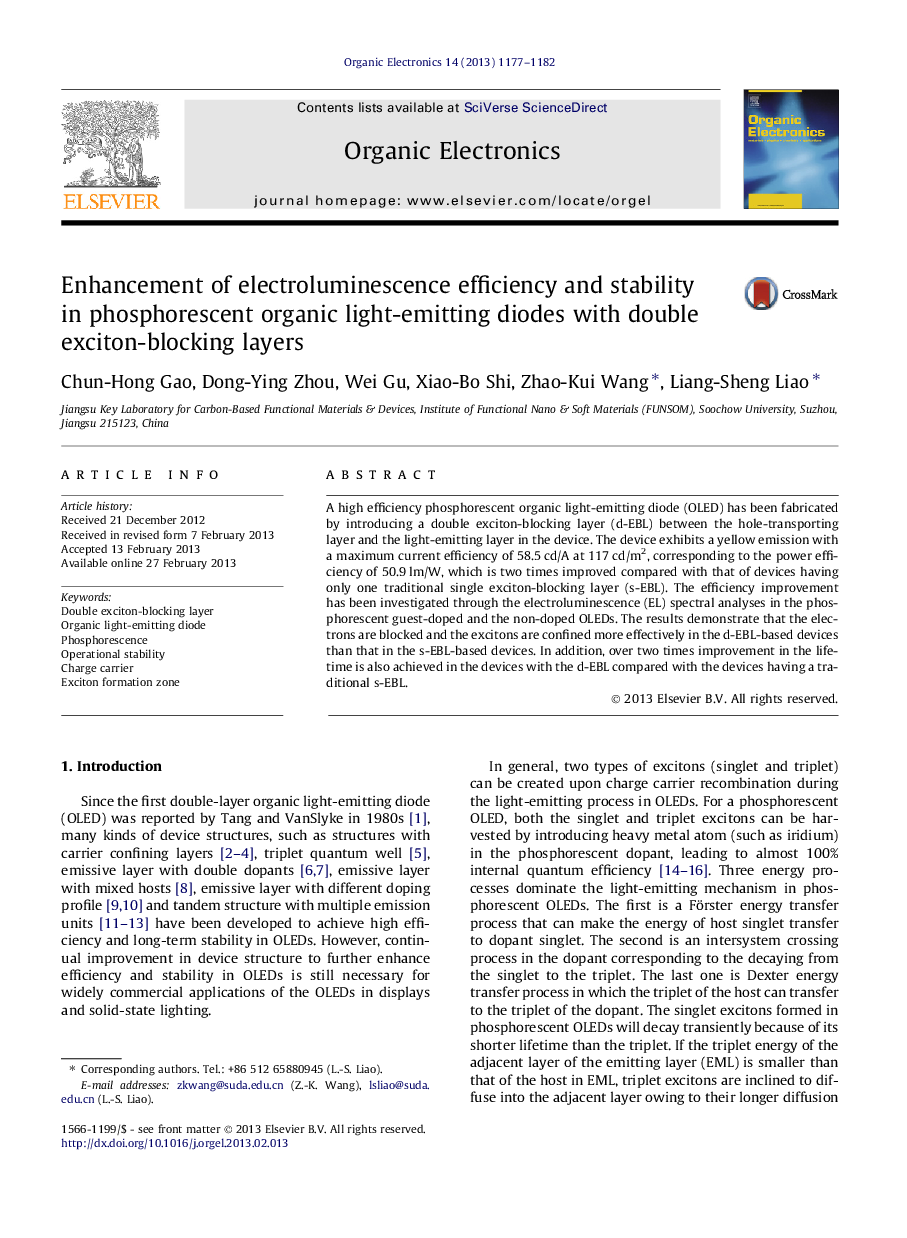| Article ID | Journal | Published Year | Pages | File Type |
|---|---|---|---|---|
| 1263917 | Organic Electronics | 2013 | 6 Pages |
A high efficiency phosphorescent organic light-emitting diode (OLED) has been fabricated by introducing a double exciton-blocking layer (d-EBL) between the hole-transporting layer and the light-emitting layer in the device. The device exhibits a yellow emission with a maximum current efficiency of 58.5 cd/A at 117 cd/m2, corresponding to the power efficiency of 50.9 lm/W, which is two times improved compared with that of devices having only one traditional single exciton-blocking layer (s-EBL). The efficiency improvement has been investigated through the electroluminescence (EL) spectral analyses in the phosphorescent guest-doped and the non-doped OLEDs. The results demonstrate that the electrons are blocked and the excitons are confined more effectively in the d-EBL-based devices than that in the s-EBL-based devices. In addition, over two times improvement in the lifetime is also achieved in the devices with the d-EBL compared with the devices having a traditional s-EBL.
Graphical abstractFigure optionsDownload full-size imageDownload as PowerPoint slideHighlights► A double exciton-blocking layer is used in a PHOLED. ► Remarkable enhancements in EL efficiency and stability are achieved. ► The mechanism of better electron and exciton confining capability is investigated. ► The exciton–exciton annihilation can be suppressed as well in the device.
